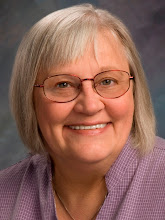At yet another appointment with a healthcare professional, I was trying to figure out if a different glucose
The monitors are easy to come by. Manufacturers give them away, even those that cost close to $100, because they know they’ll make up the loss with the sale of test strips. Each strip costs me just over $1, and since I’m supposed to monitor my glucose around five times a day, the cost really adds up.
But that’s just a fraction of the total monthly cost of diabetes maintenance. Here’s an off-the-top-of-my-head list of diabetes-related expenses:
- Healthcare insurance, if you can even get it. Premiums for diabetics are higher than those for people with some other pre-existing conditions, partly because of the many potential complications resulting from diabetes. I am among the millions of Americans without health insurance, and every day I feel as if I’m living on the precipice of financial disaster.
- Equipment, such as glucose monitors and test strips, insulin pumps, disposable
insulin needles and so forth. Without insurance or participation in some kind of discount program, the temptation is to let these purchases slide. Diabetics often end up testing less frequently to save on the cost of strips and using insulin needles multiple times, until they’re so blunt that they hurt. Don’t ask me how I know this.
- Doctor visits and labs. Insanely expensive without insurance. Oh, to go back to the days of a $20 co-pay! One doctor’s visit with labs can run $200-plus, and I’m supposed to see my doctor once a month. So I stretch it out to six weeks…two months…three months. At one point recently I went seven months between visits, which isn’t easy to do when doctors insist on in-office visits when all you need is a refill on a life-saving medication.
- Medications. There’s the obvious, like oral diabetes meds and insulin, and the secondary meds, like those that regulate cholesterol and blood pressure. I’m on five meds; I get two from India to save on the cost, but even so my monthly total is several hundred dollars.
- Food. Medical professionals are finally figuring out that all those health-food nuts weren’t so nuts after all. Now I know you can go overboard with the whole natural-foods thing, but I do believe that buying locally grown organic food is the way to go whenever possible. All you have to do is go straight from your local supermarket to a Whole Foods or Wild Oats store and check out the produce section. I want to pitch a tent in my local Whole Foods produce department and graze for a week. Even if you don’t go organic, simply eating unprocessed foods in their unaltered condition is so much healthier—but so much more expensive.
- Supplements. One doctor had me downing so many vitamins and minerals that I barely had time to eat real food. The thing is, he wasn’t a nut job. I believe he was on the right track—my glucose levels did stabilize—and maybe I’ll return to his regimen one day. But the thought of swallowing 30 pills every day in addition to my meds and an abundance of raw fruits vegetables, plus paying the additional price for those pills, just doesn’t cut it right now.
I’m sure I’ve missed an entire category or two of diabetes-related expenses. But this is all so depressing that I’m just going to stop the list now.
How about you? What’s your biggest health-related expense?
Fasting glucose: 175 and 164















